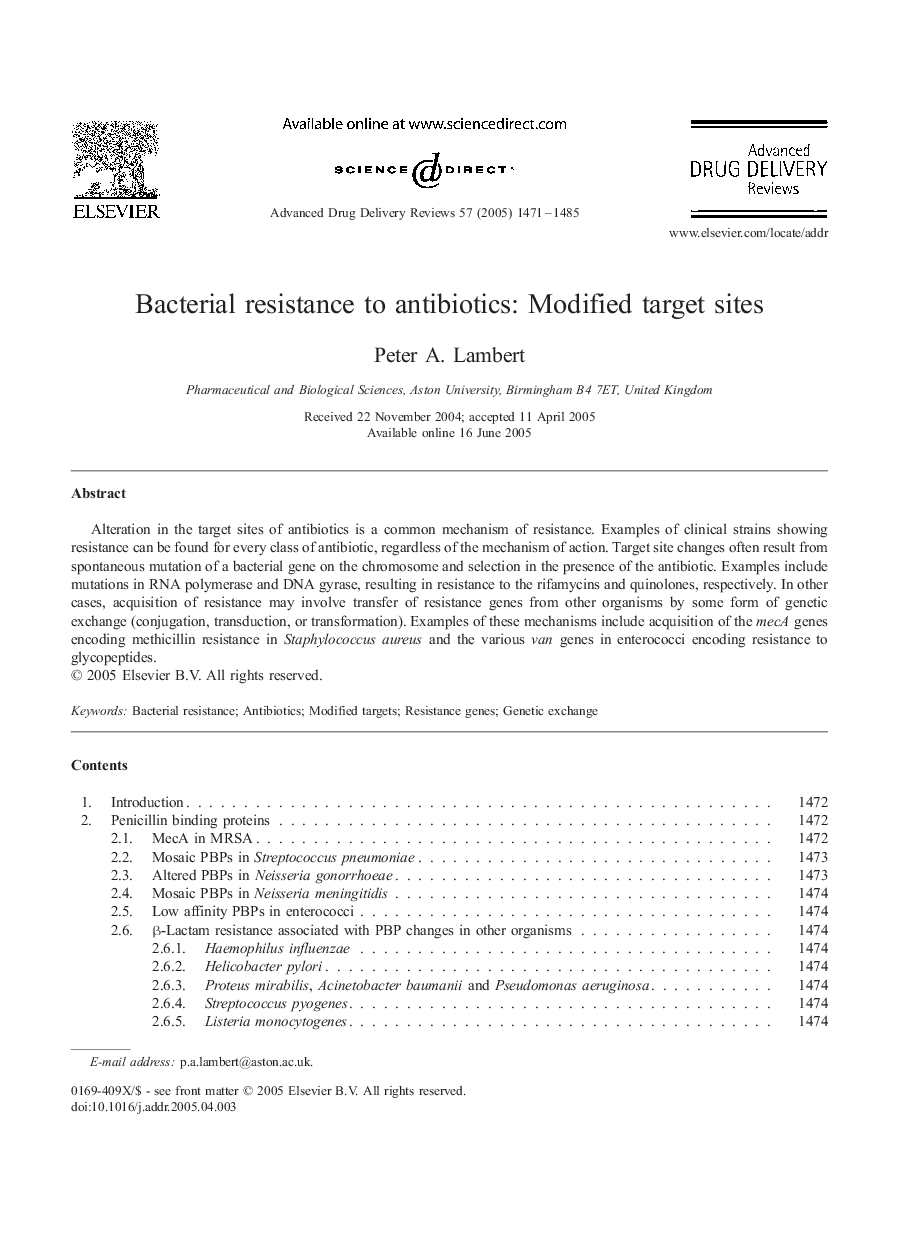| Article ID | Journal | Published Year | Pages | File Type |
|---|---|---|---|---|
| 10883816 | Advanced Drug Delivery Reviews | 2005 | 15 Pages |
Abstract
Alteration in the target sites of antibiotics is a common mechanism of resistance. Examples of clinical strains showing resistance can be found for every class of antibiotic, regardless of the mechanism of action. Target site changes often result from spontaneous mutation of a bacterial gene on the chromosome and selection in the presence of the antibiotic. Examples include mutations in RNA polymerase and DNA gyrase, resulting in resistance to the rifamycins and quinolones, respectively. In other cases, acquisition of resistance may involve transfer of resistance genes from other organisms by some form of genetic exchange (conjugation, transduction, or transformation). Examples of these mechanisms include acquisition of the mecA genes encoding methicillin resistance in Staphylococcus aureus and the various van genes in enterococci encoding resistance to glycopeptides.
Related Topics
Life Sciences
Biochemistry, Genetics and Molecular Biology
Biotechnology
Authors
Peter A. Lambert,
